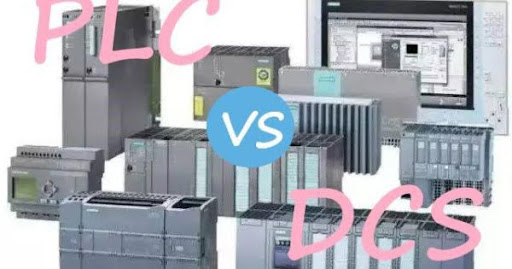
Introduction
In industrial automation, the effectiveness of a control system is critical to process efficiency, safety, and scalability. Two of the most common systems used in automation are Distributed Control Systems (DCS) and Programmable Logic Controllers (PLC). While both play crucial roles in controlling and monitoring industrial processes, they differ significantly in design, application, and functionality. This article explores the key differences between DCS and PLC, providing insights into their strengths and best-suited applications.
What is a Distributed Control System (DCS)?
A Distributed Control System (DCS) is an advanced control system designed to manage complex industrial processes. It consists of multiple controllers distributed across the facility, all linked to a central operator interface.
Key Features of DCS:
- Centralized Monitoring with Distributed Control: DCS integrates various control loops into a single cohesive system, ensuring centralized operation and data management while allowing controllers to operate locally.
- Designed for Continuous Processes: It excels in applications that require precise, continuous control, such as in chemical plants, oil refineries, and power generation.
- Scalability and Redundancy: DCS is highly scalable, capable of managing thousands of input/output (I/O) points. Built-in redundancy ensures high reliability, even in critical systems.
- Integrated Human-Machine Interface (HMI): Real-time visualization and control are core features, enabling operators to monitor complex processes effectively.
What is a Programmable Logic Controller (PLC)?
A Programmable Logic Controller (PLC) is a compact, modular control device used for automating discrete and sequential processes. It operates as an electronic brain to perform specific tasks, such as switching, timing, counting, or data processing.
Key Features of PLC:
- Flexibility and Speed: PLCs are highly responsive, making them ideal for high-speed applications like manufacturing or robotics.
- Cost-Effective and Compact: They are relatively inexpensive compared to DCS and are suitable for small to medium-sized automation tasks.
- Modular Design: PLC systems are customizable, allowing users to add or remove modules to meet specific requirements.
- Simple Programming: Commonly programmed using ladder logic, making them easy to learn and deploy.
Key Differences Between DCS and PLC
| Aspect | DCS | PLC |
| Application | Continuous processes like oil refining and energy production. | Discrete processes like manufacturing and assembly lines. |
| Architecture | Distributed with a centralized operator interface. | Centralized, modular design with separate HMI/SCADA. |
| Scalability | Easily scales to manage thousands of I/O points. | Scalable but limited in handling extensive systems. |
| Reliability | Built-in redundancy for high fault tolerance. | Lower redundancy; external measures required. |
| Programming | Complex, using advanced tools and languages. | Simpler, often ladder logic or function block diagrams. |
| Cost | High initial cost and operational expense. | Lower cost for smaller systems or simple tasks. |
| Response Time | Prioritizes accuracy over speed, suited for steady-state processes. | Faster response for time-critical applications. |
| Maintenance | Requires specialized skills and tools for updates. | Easier to maintain and modify. |
When to Use a DCS
DCS is the preferred choice for processes that require:
- Continuous monitoring and control over long periods.
- High system availability and fault tolerance.
- Applications where multiple loops interact, and centralized control is crucial.
Common Use Cases:
- Chemical manufacturing and processing.
- Oil and gas production.
- Water and wastewater treatment facilities.
- Pharmaceutical and food processing plants.
When to Use a PLC
PLC is ideal for applications that:
- Demand fast response times and high-speed operations.
- Involve discrete or sequential control.
- Have simpler system requirements or are cost-sensitive.
Common Use Cases:
- Automotive assembly lines.
- Packaging and labeling machines.
- Conveyor belt systems.
- Robotic arms and pick-and-place equipment.
Integration Possibilities
Modern industrial systems often leverage the strengths of both DCS and PLC by integrating them into hybrid solutions. For example:
- DCS for Process Control: Used to oversee and stabilize continuous operations.
- PLC for Discrete Tasks: Deployed for faster, high-speed controls within the same facility.
This hybrid approach allows industries to achieve higher efficiency and flexibility.
Conclusion
DCS and PLC serve distinct purposes, with DCS excelling in complex, continuous processes and PLC dominating in discrete, high-speed applications. The choice between them depends on factors such as the nature of the process, scalability, response time, and budget. In many cases, a combination of both systems can offer the best of both worlds, ensuring efficient and reliable industrial automation. Careful assessment of process needs and system capabilities is essential for making the right decision.
OstBridge is based on the market in China and Europe to provide our clients with original HEIDENHAIN, PRECIZIKA, SIEMENS, B & R, BOSCH REXROTH, EATON VICKERS, PARKER, Large stock, accept MOQ, fast delivery If you are looking for the fields of precise motion control, electronic control, automation, and hydraulic system, the OstBridge team must be your first choice to bring you the right solution.

